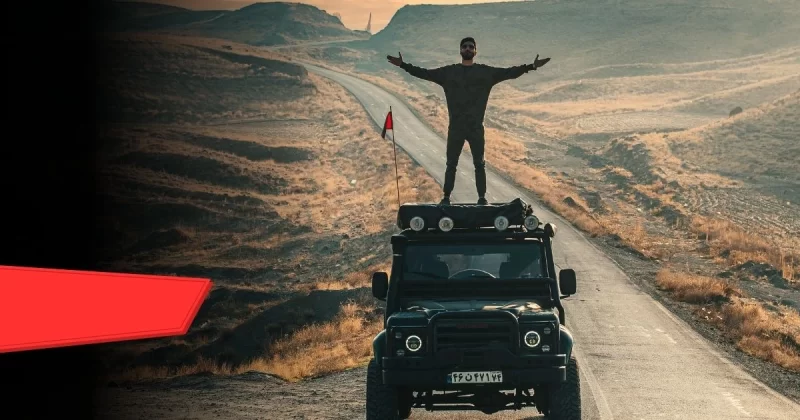There’s a unique magic to the road trip. It’s a chance to trade in the rushed routines of daily life for the open horizon, the endless sky, and the simple joy of discovery. But whether you’re crossing state lines for a weekend getaway or embarking on an epic cross-country adventure, the dream of freedom on the road can quickly turn into a cramped, frustrating reality if you aren’t adequately prepared. The difference between an unforgettable journey and a miserable slog often comes down to one thing: a well-thought-out packing list.
This isn’t just about throwing clothes and a toothbrush into a suitcase. A truly successful trip hinges on mastering your road trip checklist. This carefully curated collection of road trip essentials enhances your comfort, maximizes your convenience, and ensures you’re ready for any curveball the road throws your way. Think of your vehicle not just as transportation, but as a cozy, efficient, and self-sufficient mobile base camp. By focusing on a road trip checklist across key categories—comfort, technology, sustenance, and safety—you can transform hours behind the wheel into a genuinely enjoyable experience.
Creating a Sanctuary of Comfort
When you spend hours sitting in the same spot, tiny discomforts multiply quickly. Prioritizing physical well-being is the first step toward a happy road trip. This includes items that turn a standard car seat into a personal relaxation zone, as well as gear that helps your body handle long stretches of sitting.
The Seat and Back Support Strategy
For the driver and the main passenger, proper posture is non-negotiable. A sore back or stiff neck can derail a driving day faster than a flat tire.
- Lumbar Support Cushions: Many modern cars have decent lumbar support, but dedicated memory foam or inflatable cushions can make a world of difference. They help maintain the natural inward curve of your lower spine, relieving pressure and fatigue. Even a simple rolled-up towel placed at the small of your back is a veteran traveler’s trick that works in a pinch.
- Neck and Travel Pillows: These are for everyone, not just the passengers planning to sleep. A U-shaped travel pillow provides crucial lateral support, keeping your head steady and preventing the painful “bobbing” that can occur when you doze off. For the driver, a comfortable neck support cushion that attaches to the headrest can help reduce tension in the upper shoulders and neck.
- Seat Cushions: If your vehicle has older or firmer seats, a non-slip gel or memory foam seat cushion can significantly reduce pressure on your tailbone and lower body, improving circulation and overall endurance for long stints.
Master of the Microclimate
The temperature inside a car is a battlefield, constantly changing with the sun’s angle, the time of day, and the passengers’ personal preferences. Being ready for these shifts is key to sustained comfort.

- Personal Blankets: Even in the summer, air conditioning can create a chill for passengers, especially those in the back. Lightweight fleece or travel blankets are easy to stash and deploy. A simple throw can also act as extra padding, a picnic blanket, or a cover for a dirty roadside stop.
- Layered Clothing: This is the most fundamental rule of travel comfort. Everyone should wear loose, breathable fabrics and have easy access to a comfortable hoodie, a zip-up jacket, or a shawl. This allows for quick, individual adjustments as the car heats up or cools down. Avoid restrictive clothing, such as tight jeans or overly formal attire, as they will only increase fatigue.
- Sunglasses and Window Shades: Sun glare is not only annoying, but it’s also fatiguing and a safety hazard. A good pair of polarized sunglasses is essential for the driver. For passengers, especially those prone to sun sensitivity or motion sickness, removable, static-cling window shades can block direct sun rays without entirely obstructing the view.
The Command Center of Convenience: Technology and Organization
In the 21st century, on-the-road convenience means staying powered up, connected, and organized. Your vehicle needs to function as an efficient, mobile office and entertainment hub.
Powering the Journey
A dead phone on the road is more than an inconvenience; it’s a potential safety issue, as it’s the primary tool for navigation, communication, and emergencies.
- Multi-Port Car Chargers and Inverters: A standard USB charging port is rarely enough. Invest in a high-quality car charger that plugs into the 12-volt outlet and offers multiple high-speed USB ports, ideally supporting both USB-A and USB-C. For those with laptops, portable gaming devices, or camera battery packs, a power inverter that converts the car’s DC power to a standard AC wall outlet is a game-changer.
- Portable Power Banks: For stops, hikes, or when the car’s power is in high demand, a fully charged power bank is your lifeline. Make sure it has enough capacity to recharge your key devices multiple times fully.
- Cable Management: Prevent a spaghetti-mess of wires. Use small Velcro straps or cable ties to keep charging cords neat. Designate one area, like a center console bin, as the “charging station” to keep things centralized.
Navigation and Digital Entertainment
While the scenic route is nice, getting hopelessly lost is not. Technology keeps you on track and the passengers happy.
- Car Phone Mount: A reliable, dashboard-mounted phone holder is essential for the driver. It allows quick, glanceable access to GPS directions without taking your hands off the wheel or your eyes off the road. Safety first: ensure it’s placed legally and doesn’t obstruct your view.
- Downloaded Media: Relying solely on streaming services is a recipe for silent, irritated passengers in areas with poor cellular service. Before you leave, download your favorite music playlists, audiobooks, and podcasts for offline listening. The same goes for any movies or shows for backseat viewers.
- Headphones and Splitters: Not everyone has the same taste in music or audio content. Individual headphones are crucial. For younger travelers or co-pilots watching a movie, a headphone splitter lets two people share one device quietly. Noise-canceling headphones are a luxury for the co-pilot, creating a quiet haven amid road noise.
Vehicle Organization
Clutter is the enemy of comfort and convenience. A tidy car means you can find what you need quickly, and everyone has a little more personal space.
- Trash Solutions: Designate a trash bin immediately. A small, lined plastic bin or even a collection of grocery bags can keep wrappers and waste contained. Empty it at every fuel or rest stop.
- Seat-Back Organizers: These hanging organizers are perfect for stowing water bottles, snacks, tablets, books, and small toys, keeping them off the floor and within easy reach of backseat passengers.
- Trunk Organizer or Cargo Cubes: To maximize space and prevent items from rolling around, collapsible trunk organizers are fantastic for separating groceries, emergency gear, and daily-use items from your main luggage.
Fueling the Crew: Sustenance on the Go
Frequent stops for food and drink are costly and eat up valuable driving time. Bringing your own provisions is a cornerstone of road trip convenience and often, better health.
Hydration and Refreshments
Staying hydrated and having quick access to drinks are vital for maintaining alertness, especially for drivers.
- The Cooler System: A top-tier road trip essential. For short trips, a soft-sided cooler with ice packs is enough for drinks and a few sandwiches. For longer journeys, a hard-sided electric cooler that plugs into the car’s 12V outlet provides proper refrigeration, eliminating the need for messy ice.
- Reusable Water Bottles: Insulated bottles keep water cold for hours. Having a personal bottle for everyone encourages hydration and is significantly more environmentally friendly than constantly buying plastic bottles.
- Cup Holder Expanders: Many modern water bottles are too large for standard car cup holders. An adjustable cup holder expander that fits securely into the existing slot can accommodate larger travel mugs and bottles, keeping your drink secure and accessible.
Smart and Low-Mess Snacks
The best road trip snacks are non-perishable, easy to eat with one hand, and won’t leave sticky residue on your upholstery.
- Protein and Fiber Focus: Think beyond sugary treats. Snacks high in protein and fiber offer sustained energy and prevent the dreaded sugar crash. Examples include:
- Nuts and Seeds: Almonds, cashews, and pre-portioned trail mix.
- Protein Bars and Granola Bars: Choose options low in added sugar.
- Beef Jerky or Turkey Sticks: Excellent sources of savory protein.
- Dried Fruit and Veggie Chips: A healthier alternative to potato chips.
- Finger-Friendly Freshness (with a Cooler): If you have a cooler, you can elevate your snack game significantly. Hard cheeses, string cheese, pre-cut carrots and celery sticks, grapes, and apple slices are excellent, refreshing options.
- The “Prep-Ahead” Meal: Making simple sandwiches, wraps, or even a pasta salad ahead of time lets you have a satisfying, healthy lunch at a scenic viewpoint rather than a rushed, greasy meal at a rest stop. Pack a small set of reusable cutlery and plates for these stops.
The Prepared Traveler: Safety, Health, and Emergency
No matter how smooth the journey, being prepared for the unexpected is the ultimate form of convenience. Knowing you have the right gear for a minor issue provides immense peace of mind.
Vehicle Emergency Readiness
These are the non-negotiables that live in the trunk, waiting for the one time you’ll truly need them.
- Jumper Cables or Portable Jump Starter: A dead battery can happen to anyone. A portable jump starter is effortless to use and doesn’t require a second vehicle, making it an essential piece of modern emergency gear.
- Roadside Emergency Kit: A basic kit should include a flashlight (with extra batteries), warning triangles or flares, work gloves, basic tools, duct tape, and a multi-tool.
- Tire Essentials: Always check your spare tire before leaving. Also consider a portable tire inflator that plugs into your 12V outlet. It’s perfect for topping off a low tire or dealing with a slow leak until you can get to a service station.
- Physical Map or Atlas: In a world of GPS, a paper map seems old-fashioned, but it’s a lifesaver when cell service fails or your device battery dies. It provides an essential overview of your route and the surrounding areas.
Health and Hygiene
Staying clean and healthy is critical, mainly when relying on public facilities.
- Comprehensive First Aid Kit: Go beyond the basics. Include assorted bandages, antiseptic wipes, gauze, pain relievers (ibuprofen, acetaminophen), anti-diarrhea medication, antacids, and motion sickness remedies.
- Hand Sanitizer and Wipes: Essential for quick clean-ups after pumping gas, handling money, or before eating when a sink is not available. Keep them within easy reach, perhaps in a door pocket.
- Toiletries and Personal Meds: Keep prescription medications accessible, not buried in a suitcase. A small, hangable toiletry bag is great for easy carry and use at roadside restrooms or camp showers. Don’t forget lip balm with SPF to combat dry air and sun exposure.
- Sunscreen and Bug Spray: These are important for both the time in the car (UV rays penetrate windows) and during stops for hiking or exploring.
The Psychology of a Great Road Trip
Finally, the most overlooked road trip essential isn’t a physical item, but a mental one: the right attitude and a little preparation for the inevitable boredom.
Breaking the Monotony
- Interactive Games: For groups, classic car games like “20 Questions” or “I Spy,“ or a competitive round of a downloaded trivia app, are excellent for breaking the quiet and connecting with your travel companions.
- Travel Journal or Sketchpad: Encourage passengers to document the journey. This is a lovely way to pass the time and create a tangible memory of the trip.
- Planned Stops for Movement: Convenience doesn’t mean non-stop driving. For comfort and safety, plan to stop every 2 to 3 hours. Use this time not just for gas and restrooms, but to walk around, stretch your legs, and get some fresh air. Even a quick 10-minute walk around the rest area parking lot can rejuvenate the driver and passengers.
Road Trip Checklist: Designing Your Perfect Journey
By methodically preparing your vehicle with these essentials, you’re not just packing a car—you’re designing an experience. You are proactively eliminating friction points in travel, ensuring your focus stays where it should be: on the stunning scenery, the shared laughter, and the simple, unparalleled adventure of the open road. The freedom of a road trip is best enjoyed when you’re entirely comfortable and fully prepared.













